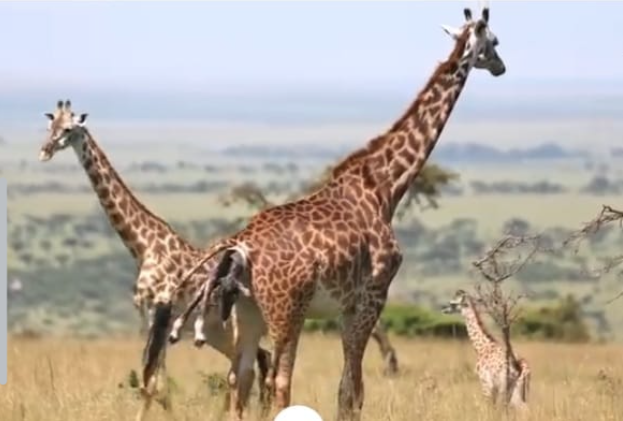ثقافة بيئية
الصيد الجائر يشكل تهديدًا كبيرًا على البيئة والتنوع البيولوجي – Poaching poses a significant threat to the environment and biodiversity

الصيد الجائر يشكل تهديدًا كبيرًا على البيئة والتنوع البيولوجي. إليكم بعض النقاط التي تبرز خطورة هذا النشاط وتأثيراته السلبية:
التأثيرات السلبية للصيد الجائر:
1.
انقراض الأنواع: يؤدي الصيد الجائر إلى انخفاض حاد في أعداد الحيوانات المستهدفة، مما يعرضها لخطر الانقراض. الانقراض يخل بالتوازن البيئي ويؤثر على سلاسل الغذاء.
2. اختلال التوازن البيئي: العديد من الحيوانات تلعب دورًا حيويًا في الحفاظ على صحة النظم البيئية. عندما تتقلص أعدادها أو تنقرض، يؤدي ذلك إلى اختلال التوازن الطبيعي ويؤثر على النباتات والحيوانات الأخرى.
3. فقدان التنوع البيولوجي
: التنوع البيولوجي ضروري للحفاظ على بيئة صحية ومستدامة. الصيد الجائر يقلل من التنوع البيولوجي ويضعف القدرة البيئية على التكيف مع التغيرات.
4. التأثير على المجتمعات المحلية: يعتمد العديد من المجتمعات المحلية على الموارد الطبيعية للصيد كمصدر للغذاء والدخل. الصيد الجائر يمكن أن يستنزف هذه الموارد ويؤدي إلى أزمات اقتصادية وغذائية.
كيف يمكننا التصدي للصيد الجائر؟
1. التوعية والتعليم: نشر الوعي حول خطورة الصيد الجائر وأهمية الحفاظ على الحياة البرية من خلال حملات تعليمية وإعلامية.
2. تعزيز القوانين والتشريعات: يجب تشديد القوانين المتعلقة بالصيد الجائر وتطبيقها بصرامة للحد من هذا النشاط.
3. دعم جهود الحفظ: دعم المشاريع والمبادرات التي تهدف إلى حماية الحيوانات والنظم البيئية، مثل إنشاء المحميات الطبيعية.
4. التعاون الدولي: التنسيق بين الدول لمكافحة الصيد الجائر عبر الحدود ومشاركة المعلومات والموارد.
خاتمة:
الصيد الجائر ليس مجرد تهديد للحيوانات الفردية، بل هو خطر يهدد التوازن البيئي والصحة العامة لكوكبنا. يجب علينا جميعًا أن نعمل معًا لحماية الحياة البرية والحفاظ على الطبيعة من أجل الأجيال القادمة.
لنكن جميعًا جزءًا من الحل، ونعمل بجد لمكافحة الصيد الجائر وحماية كوكبنا.
Poaching poses a significant threat to the environment and biodiversity. Here are some points that highlight the seriousness of this activity and its negative impacts:
Negative Impacts of Poaching:
1.
Species Extinction: Poaching leads to a sharp decline in the numbers of targeted animals, putting them at risk of extinction. Extinction disrupts the ecological balance and impacts food chains.
2. Ecological Imbalance: Many animals play a vital role in maintaining the health of ecosystems. When their numbers decline or become extinct, this disrupts the natural balance and affects other plants and animals.
3. Biodiversity Loss: Biodiversity is essential for maintaining a healthy and sustainable environment. Poaching reduces biodiversity and weakens the environment’s ability to adapt to change.
4. Impact on Local Communities: Many local communities depend on natural resources for food and income. Poaching can deplete these resources and lead to economic and food crises.
How Can We Address Poaching?
1. Awareness and Education: Raise awareness about the seriousness of poaching and the importance of wildlife conservation through educational and media campaigns.
2. Strengthen Laws and Legislation: Poaching laws must be tightened and strictly enforced to curb this activity.
3. Support Conservation Efforts: Support projects and initiatives aimed at protecting animals and ecosystems, such as establishing nature reserves.
4. International Cooperation: Coordinate between countries to combat poaching across borders and share information and resources.
Conclusion:
Poaching is not just a threat to individual animals; it is a threat to the ecological balance and overall health of our planet. We must all work together to protect wildlife and conserve nature for future generations.
Let us all be part of the solution and work hard to combat poaching and protect our planet.
Negative Impacts of Poaching:
1.
Species Extinction: Poaching leads to a sharp decline in the numbers of targeted animals, putting them at risk of extinction. Extinction disrupts the ecological balance and impacts food chains.
2. Ecological Imbalance: Many animals play a vital role in maintaining the health of ecosystems. When their numbers decline or become extinct, this disrupts the natural balance and affects other plants and animals.
3. Biodiversity Loss: Biodiversity is essential for maintaining a healthy and sustainable environment. Poaching reduces biodiversity and weakens the environment’s ability to adapt to change.
4. Impact on Local Communities: Many local communities depend on natural resources for food and income. Poaching can deplete these resources and lead to economic and food crises.
How Can We Address Poaching?
1. Awareness and Education: Raise awareness about the seriousness of poaching and the importance of wildlife conservation through educational and media campaigns.
2. Strengthen Laws and Legislation: Poaching laws must be tightened and strictly enforced to curb this activity.
3. Support Conservation Efforts: Support projects and initiatives aimed at protecting animals and ecosystems, such as establishing nature reserves.
4. International Cooperation: Coordinate between countries to combat poaching across borders and share information and resources.
Conclusion:
Poaching is not just a threat to individual animals; it is a threat to the ecological balance and overall health of our planet. We must all work together to protect wildlife and conserve nature for future generations.
Let us all be part of the solution and work hard to combat poaching and protect our planet.
